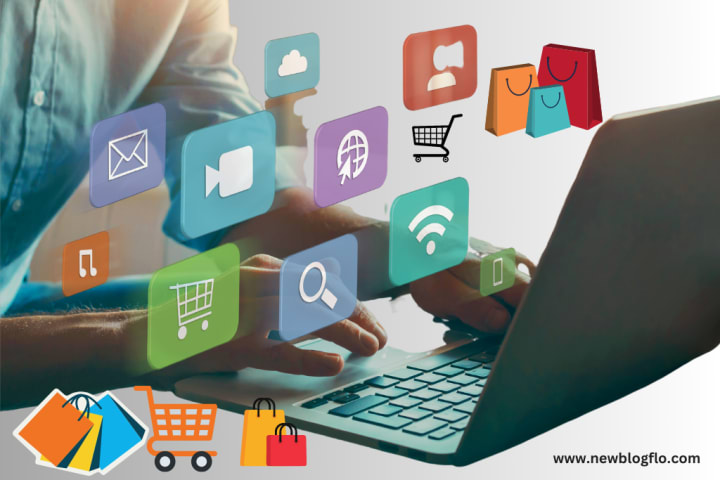VR and AR in Retail: Advancing Innovation in Shopping Experience
Transforming Retail Experiences: Unleashing the Power of VR and AR

Explore the transformative power of VR and AR in retail as these technologies revolutionize the industry. Discover how retailers leverage augmented and virtual reality to enhance the customer journey, enable accurate size and style judgments, and offer immersive experiences.
From digitally projecting furniture into homes to trying on glasses virtually, this article showcases the best examples of AR and VR integration in retail. Immerse yourself in the future of shopping.
Exploring the Power of VR in Retail: Real-World Examples
The Impact of Virtual Reality on In-Store Experiences
Virtual reality (VR) is changing traditional retail stores in a significant way. It offers interactive experiences within the physical store, creating a sense of immersion for customers that is enjoyable and captivating.
Brands like Lowe's, IKEA, and North Face are using VR to let shoppers visualize products in lifelike environments. With VR headsets, customers can preview furniture in their own homes, test drive cars, or climb Mount Everest with outdoor gear before buying.
This unique try-before-you-buy experience boosted purchases at Lowe's by 30%. VR enables memorable in-store encounters that build brand loyalty.
AR in Retail: Illuminating Case Studies
How Augmented Reality is Transforming Retail Shopping
While VR immerses users in virtual worlds, augmented reality (AR) overlays digital elements onto the real world. Retailers like Sephora, Wayfair, and Converse are leveraging AR to enhance product visualization and the customer experience.
For example, Sephora's Virtual Artist app lets you virtually try on makeup products using your phone's camera. IKEA Place lets you preview true-to-scale IKEA furniture in your living space before buying.
AR provides on-the-spot product interaction, improving purchase confidence and lowering returns. 60% of shoppers prefer retailers with AR capabilities.
How is augmented reality impacting and transforming the retail industry?
Some key ways AR is revolutionizing retail include:
Enhanced product visualization: AR allows customers to preview products in context. For example, IKEA Place lets you see true-to-scale IKEA furniture layouts in your living space. Amazon AR View allows you to view products in your surroundings before buying.
Virtual try-ons: AR apps like Sephora Virtual Artist, Rimmel Get The Look, and Ray-Ban Virtual Try-On use facial tracking to let you virtually try on makeup, accessories, and eyewear. This provides an in-store fitting experience anywhere.
Informational overlays: Retailers can attach digital information overlays like reviews, tutorials, and specifications to in-store products when scanned with AR apps. This helps shoppers make informed purchase decisions.
Immersive brand experiences: AR provides wow-factor product launches and marketing. For example, a Pepsi Max AR bus shelter gave people a simulated skydiving experience through their phones.
Analytics for retailers: AR shopping apps provide valuable customer data like dwell time, interactions, and sessions. Retailers can gain actionable insights to optimize merchandising and marketing.
With smartphone AR capabilities improving, retailers are harnessing augmented reality to blend digital enhancements with real-world shopping. This bridges e-commerce and physical retail to create intuitive, omnichannel experiences.
A Deep Dive into AR, VR, and MR: Comprehensive Examples
Bridging the Digital and Physical Shopping Worlds

AR and VR are often confused with mixed reality (MR), which merges real and virtual worlds. While AR augments reality, VR completely replaces it. MR leverages the benefits of both to create hybrid spaces for seamless customer engagement.
Brands like Amazon Go and Alibaba's FashionAI concept store use MR, AI, and sensor fusion to enable grab-and-go shopping and smart dressing rooms. MR erases boundaries between online and offline retail, providing an omnichannel experience.
Virtual Reality in Business: Pioneering Examples
VR as a Game-Changer in Retail Business
Retail giants like Walmart and Carrefour are turning to VR and AR to transform business operations beyond marketing. Walmart uses VR for employee training, boosting confidence and performance. Carrefour launched a VR training academy, cutting training costs by 30%.
VR transportation simulations have reduced logistics accidents by 29% at UPS. For retailers, VR and AR are strategic technologies with tangible ROI across the value chain.
Industry Giants Harnessing AR and VR: A List of Leading Companies
Standing at the Frontline: Companies Implementing AR and VR
- Walmart uses VR in over 200 stores for training programs.
- IKEA Place AR app has over 2 million downloads.
- Amazon AR View lets customers visualize products in their space.
- Sephora AR apps bring an in-store try-on experience anywhere.
- WayfairView AR app makes it easy to preview furniture at scale.
- Alibaba, Lowes, and American Apparel use AR for enhanced product visualization.
- North Face and YouCam makeup use VR for immersive shopping.
Decoding Augmented Reality and Virtual Reality: A Comparative Analysis
AR vs. VR: Which Brings More Value to Retail?
For retailers, AR brings pragmatism, while VR unlocks experiential shopping. AR is accessible using smartphones, while VR requires headsets. AR overlays digital data onto real environments for practical use cases like product previews.
VR creates awe-inspiring, fictional environments for experiential exposure beyond practicality. Both technologies usher retailers into the future of physical retail. While AR benefits mainstream use, VR unlocks deeper emotional customer experiences and brand engagement.
Key Benefits of Virtual Reality in the Retail Sector
Unlocking New Dimensions: The Potential of VR in Retail
There are manifold benefits to using VR in retail:
- Memorable in-store experiences and enhanced customer engagement
- Increased product interaction for informed purchases
- Heightened brand awareness and recall
- Lower returns as a result of "try before you buy"
- Fresh marketing channels and revenue streams
- Improved customer data via VR analytics
- More productive operations via employee VR training
- Enhanced logistics and warehouse management
Virtual Reality Online Shopping: The Future of E-Commerce
A New Era of Shopping Experience with VR
VR also unlocks the next frontier of online retail, providing immersive shopping without leaving your home. Retailers like Shopify, eBay, and Overstock are exploring VR and AR commerce capabilities. Trillenium enables VR stores with advanced product visualization.
AliExpress and its parent Alibaba Group already have VR shopping malls on their apps. With VR, e-commerce can virtually transport shoppers to interactive brand experiences and even exotic store environments worldwide.
The Virtual Reality Store: A New Shopper's Paradise
A New Breakthrough: VR Stores
Fully-fledged VR stores are no longer just a distant vision. Blippar has created the world's first AR and VR liquor store. The Macallan VR app transports whiskey enthusiasts to a virtual distillery.
China's JD.com opened a VR store at a Shanghai mall, letting customers browse products via a VR headset and make purchases on their smartphones. As VR shopping advances, retailers will create expansive virtual stores where customers can explore products in imaginative scenarios limited only by their creativity.
Augmenting In-store Shopping with VR
Utilizing VR to Rejuvenate Retail Stores
While e-commerce grows, brick-and-mortar retail still constitutes 85% of purchases. But traffic at malls is falling by up to 60% as shoppers move online. VR can reinvigorate physical stores with interactive experiences.
Macy's is piloting VR furniture shopping in its flagship outlet. The North Face's VR Climb Experience brings the adventure of outdoor sports to its stores. Lowe's Holoroom How-To educates DIY customers via VR tutorials. As consumers increasingly crave experiences, VR can help retailers make shopping in-store exciting again.
The Emerging Concept of Virtual Reality Retail Stores
Experiencing Retail in a Virtual Reality Landscape
Fully-immersive VR retail stores are an emerging retail archetype enabled by next-gen VR platforms like the Oculus Quest 2. In China, Alibaba has made VR stores on its Taobao app where customers shop via avatars. JD.com opened a VR flagship store in Chongqing with virtual products and cashiers.
VR retail stores allow customers to try unlimited products in imaginative virtual locales. They provide endless aisles without space constraints. Supply chain improvements in VR commerce will soon enable virtual stores to be comparable to their real-world counterparts.
Virtual Reality Shopping: A Comprehensive View
Revolutionizing Shopping Experiences with VR
By enabling consumers to browse virtual storefronts, try on items, and make purchases from the comfort of their homes, virtual reality (VR) is transforming the shopping experience. This technology overcomes geographical limitations, allowing users to access and explore stores from anywhere in the world.
VR shopping offers convenience and time-saving benefits, reducing the need for long queues, crowded malls, and physical transportation. However, challenges like hardware costs, limited accessibility, and high-speed internet connections hinder widespread adoption.
As technology becomes more affordable, VR shopping is expected to become more mainstream in the future. Overall, VR is transforming the way we shop, offering immersive experiences, expanded choices, and increased convenience.
Conclusion for VR and AR in Retail
VR and AR in retail have become integral tools in the retail industry, enhancing the customer experience, increasing sales, and transforming offline retail spaces into technologically rich environments.
About the Creator
Naglaa Saleh
Our secrets time is a blog that covers diverse topics with a focus on providing objective and exclusive content.
Enjoyed the story? Support the Creator.
Subscribe for free to receive all their stories in your feed. You could also pledge your support or give them a one-off tip, letting them know you appreciate their work.






Comments
There are no comments for this story
Be the first to respond and start the conversation.